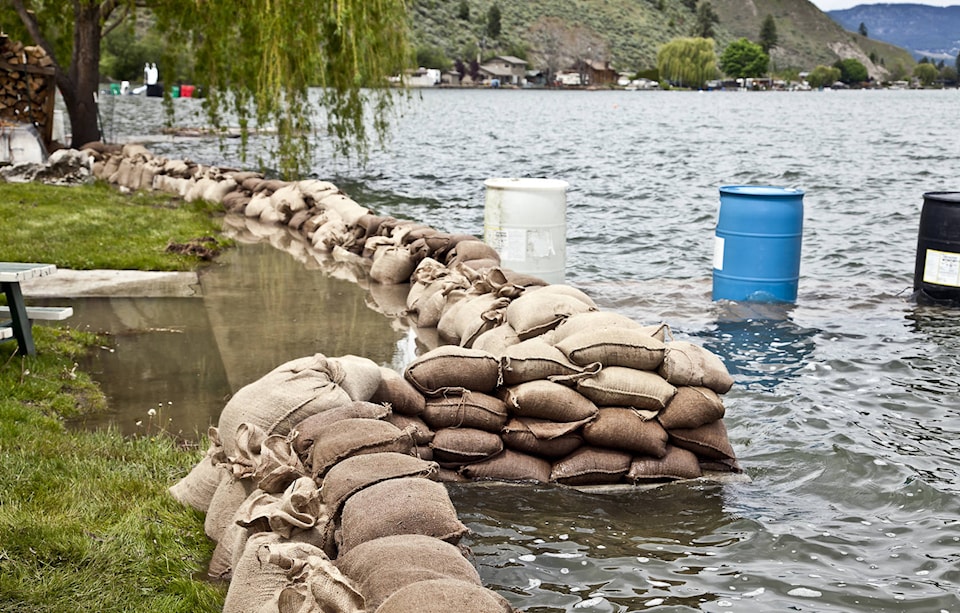When floodwaters begin to recede in the Okanagan-Shuswap, focus will shift from emergency response to the ongoing recovery in the region.
As part of this recovery, the Ministry of Transportation urges residents to follow the directions of local governments for the proper disposal of emergency sandbags.
“Sand and sandbags that have been in contact with floodwaters may be exposed to contaminants, and British Columbians are encouraged to take precautions to ensure their safety and the protection of the environment,” states the ministry.
* The sandbags used in the flood response should be removed and appropriately disposed of after it is safe to do so.
* It is important to wear gloves and boots to protect yourself from scrapes and potential contaminants.
* Due to the potential of contamination, residents are advised to not use the sand in playgrounds, sandboxes or other areas where there might be direct human contact.
* Sandbag contents should not be disposed of in lakes, rivers, wetlands, floodplains, parks or other environmentally sensitive or protected areas.
* Sandbags used in the flood response should be disposed of according to the direction of local emergency authorities. A list of these local authorities can be found at the following link: www.gov.bc.ca/preparedbc/floods
Individuals are reminded they should always wash their hands with soap and warm water after contact with floodwaters or handling items that have come into contact with floodwaters.
If an open wound comes into contact with floodwater, soil, or contaminants, immediately:
* Clean it thoroughly with soap and warm water.
* Apply an antibiotic ointment to reduce the risk of infection.
* Apply a bandage.
* Check the wound and change the bandage regularly.
* See a doctor.
